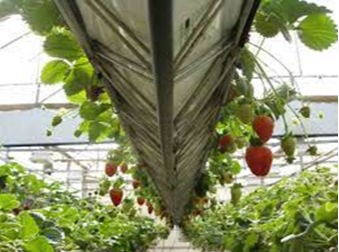
Horticulture Sector in Kenya
1.0 Introduction
Horticulture encompasses the cultivation of fruits, vegetables, flowers, and other cultivars. Kenya is a significant producer of horticultural products for both local and international markets. The tonnage of horticulture production for exports in Kenya has risen substantially in recent years. In 2023, horticultural production reached 430.2 tonnes, marking a 9.9% increase compared to 2022, when production stood at 391.5 tonnes. The total value of horticultural exports also increased, from Kshs 147.1 billion in 2022 to Kshs 153.7 billion in 2023 excluding exports of processed horticultural produce and nuts according to KNBS Economic Survey 2024.
The horticulture industry remains one of Kenya’s top foreign exchange earners, generating approximately USD 1.2 billion annually. More than 80% of horticultural products in Kenya are grown by smallholder farmers, many of whom are not directly involved in exports but supply produce to exporters as contract farmers or to fresh produce traders for domestic markets.
There are over 350 companies dealing in fresh vegetables, fruits, and cut flowers, both for export and domestic consumption. Industry trade associations like the Fresh Produce Exporters Associations of Kenya (FPEAK) and the Kenya Flower Council (KFC) play key roles in providing technical and marketing support to these companies. These associations also advocate for industry and disseminate vital information to farmers, including standards and compliance requirements.
The private sector has contributed significantly to the industry’s growth, partnering with other stakeholders to drive development. The government has established several agencies, such as the Horticultural Crops Directorate (HCD), Kenya Plant Health Inspectorate Service (KEPHIS), and the Kenya Export Promotion and Branding Agency (KEPROBA), to enforce standards, promote research and development, and regulate the industry.
2.0 Floriculture
Floriculture is mainly concentrated around Lake Naivasha, Mt. Kenya, Nairobi, Thika, Kiambu, Athi River, Nakuru, Kericho, and other regions. The primary flowers grown in Kenya include roses, carnations, alstroemeria, gypsophila, lilies, and other summer flowers. Kenya’s position in the global flower market has continued to expand. In 2023, Kenya exported 221,100 tons of cut flowers, compared to 202,900 tons in 2022. The value of floriculture exports rose to Kshs 104.3 billion in 2023 from Kshs 107.6 billion in 2022, according to the KNBS Economic Survey 2024.
Kenya remains the leading exporter of roses to the European Union (EU), holding a market share of around 40%. About 52% of exported flowers are sold through Dutch auctions, while direct sales are steadily increasing. Kenyan flowers are sold in over 70 countries worldwide.
Floriculture continues to attract local and international investors, owing to Kenya’s favorable climate, advanced infrastructure, and skilled workforce. Floriculture is a key sector in Kenya’s Vision 2030 development plan. The industry directly employs over 500,000 people, mostly women and impacting over 2 million livelihoods. The sector contributes approximately 1.3% to Kenya's Gross Domestic Product (GDP) and remains one of the country’s most significant export earners.
With increasing global demand for flower varieties and changing consumer preferences, Kenya is focusing on product diversification and competitiveness to maintain its leadership position in the floriculture sector.
3.0 Fruits and Vegetables
Kenya’s favorable climatic conditions support the production of various fruits and vegetables, primarily by smallholder farmers. The key vegetables produced include chilies, cabbage, fresh beans, baby corn, broccoli, tomatoes, spinach, carrots, onions, and snow peas. Major fruits include bananas, pineapples, avocados, mangoes, pawpaw, passion fruit, and watermelons.
Exports of fruits and vegetables saw a significant rise in 2023, with avocadoes, French beans, and snow peas leading the charge. The value of fruit and vegetable exports in 2023 was Kshs 46.1 billion, up from Kshs 42.9 billion in 2022, primarily driven by demand in Europe and Asia.
4.0 Future of Horticulture Industry in Kenya
The future of the horticulture industry in Kenya remains promising. Investors continue to show interest due to Kenya’s strong infrastructure, favorable climate, global positioning, and skilled labor force. The industry comprises large, medium, and small-scale producers who have adopted high management standards and modern technologies. Technologies such as drip irrigation, greenhouse systems, and post-harvest handling techniques are widely used.
Government support in creating an enabling business environment is critical to the industry’s continued growth. The government is working on policy interventions to ease investment and reduce the cost of doing business by improving essential services such as energy, water, and land availability. Support from county governments in infrastructure development, innovation, and human capital also plays a vital role in the sector’s growth.
Additionally, Kenya’s National Export Development and Promotion Strategy aims to boost horticulture production and value addition, helping smallholder farmers organize into producer business groups for improved efficiency. Kenya is well-positioned to expand its presence in global fruit and vegetable markets through these targeted initiatives and interventions.
In conclusion, Kenya’s horticulture industry is set for continued expansion, leveraging both domestic and international markets, with a focus on innovation, sustainability, and competitive global positioning.
